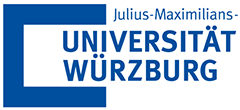
Julius-Maximilians-Universität Würzburg

Institut für Systemimmunologie, Lehrstuhl für Systemimmunologie II
Tissue-niches and cellular interactions of mouse and human ILCs at single-cell resolution
Emerging evidence suggests that ILCs residing in a given tissue can in principle be generated from different cellular sources (i.e. local resident versus recruited cells) and at different timepoints during ontogeny (e.g. embryonic, neonatal, adult). The local pools of ILCs can undergo substantial changes during inflammation and infection. We are only beginning to understand the relationship of heterogeneous subtypes of tissue-ILCs, their “division of labor” as well as their local interactions. With the advent of single-cell technologies we have started to decipher the heterogeneity of ILCs. However, the tissue microenvironment of ILCs remains largely unexplored due to the lack of experimental methods enabling the high-resolution profiling of cell types in their tissue context. Molecular control exerted by tissue-niches, e.g. via paracrine signaling, likely affects the maintenance and local differentiation of progenitor cells, and controls tissue-adaptation of ILCs to facilitate particular functions. Revealing the cell type composition of the microenvironment for distinct ILC sub-types residing in a given tissue context would allow to predict sub-type- or differentiation stage-specific niches and to test molecules involved in these cellular interactions. These context-dependent mechanisms are challenging to study, particularly in human tissues, and novel approaches to validate findings from mouse models and to address these questions in patient samples are urgently needed.
Our findings obtained during the first funding period underscore that by combining single-cell RNA-Seq, the in silico prediction of differentiation trajectories and the in vivo validation in disease models, we are able to infer early differentiation stages of ILCs and to reveal the developmental and functional heterogeneity of these cells as well as the dynamic changes occurring during immune challenge. We have now developed novel approaches to combine the power of single-cell RNA-Seq in cell type identification with the spatial resolution of single-molecule FISH, multiplexed across >100 genes, in order to map cell types in situ. On this basis, we propose to investigate human and mouse ILCs and their in situ tissue-context in the liver during homeostasis, tissue-damage and repair. The essential goal of the project is to reveal functionally distinct sub-types and their differentiation dynamics and to identify the mechanisms of inter-cellular cross-talk involved in the emergence and regulation of these populations in health and disease. To this end, we will build on our combined established expertise in the experimental in vivo study of ILCs in models of hepatic tissue damage and regeneration and our experience in scRNA-seq, in-depth bioinformatical analyses and spatial reconstruction of the liver microenvironment.
PUBLICATIONS
Skin-resident innate lymphoid cells converge on a pathogenic effector state. Bielecki P, Riesenfeld SJ, Hütter JC, Torlai Triglia E, Kowalczyk MS, Ricardo-Gonzalez RR, Lian M, Amezcua Vesely MC, Kroehling L, Xu H, Slyper M, Muus C, Ludwig LS, Christian E, Tao L, Kedaigle AJ, Steach HR, York AG, Skadow MH, Yaghoubi P, Dionne D, Jarret A, McGee HM, Porter CBM, Licona-Limón P, Bailis W, Jackson R, Gagliani N, Gasteiger G, Locksley RM, Regev A, Flavell RA. Nature. 2021 Apr;592(7852):128-132. doi: 10.1038/s41586-021-03188-w.
Epub 2021 Feb 3. PMID: 33536623
In Situ Maturation and Tissue Adaptation of Type 2 Innate Lymphoid Cell Progenitors. Zeis P, Lian M, Fan X, Herman JS, Hernandez DC, Gentek R, Elias S, Symowski C, Knöpper K, Peltokangas N, Friedrich C, Doucet-Ladeveze R, Kabat AM, Locksley RM, Voehringer D, Bajenoff M, Rudensky AY, Romagnani C, Grün D, Gasteiger G. Immunity. 2020 Oct 13;53(4):775-792.e9. doi: 10.1016/j.immuni.2020.09.002.
Epub 2020 Sep 30. PMID: 33002412